Showing Spotlights 1 - 8 of 77 in category All (newest first):
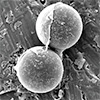 Researchers develop miniature motorized sensors employing genetically engineered viruses to selectively detect E. coli bacteria with speed and accuracy down to medically meaningful concentrations.
Researchers develop miniature motorized sensors employing genetically engineered viruses to selectively detect E. coli bacteria with speed and accuracy down to medically meaningful concentrations.
Jan 8th, 2024
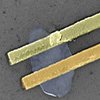 Researchers have developed 2D perovskite memristors that strengthen electrical resistance in response to light, mimicking learning in biological synapses. This could enable neuromorphic AI that learns autonomously through experience.
Researchers have developed 2D perovskite memristors that strengthen electrical resistance in response to light, mimicking learning in biological synapses. This could enable neuromorphic AI that learns autonomously through experience.
Nov 8th, 2023
 Researchers have created an artificial synapse device that displays plasticity and learning ability by merging a photoelectric perovskite material with an organic ferroelectric polymer. The advance offers a pathway to intelligent electronics and insights into the brain.
Researchers have created an artificial synapse device that displays plasticity and learning ability by merging a photoelectric perovskite material with an organic ferroelectric polymer. The advance offers a pathway to intelligent electronics and insights into the brain.
Oct 11th, 2023
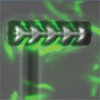 Researchers develop 3D-printed microbots that harness living bacteria as onboard engines to enable wireless control using only structured light patterns.
Researchers develop 3D-printed microbots that harness living bacteria as onboard engines to enable wireless control using only structured light patterns.
Oct 4th, 2023
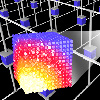 Phase change memory is an emerging technology with great potential for advancing analog in-memory computing, particularly in deep neural networks and neuromorphic computing.
Phase change memory is an emerging technology with great potential for advancing analog in-memory computing, particularly in deep neural networks and neuromorphic computing.
Apr 14th, 2023
 Researchers introduce spin orbit torque (SOT) devices to experimentally realize in-memory analogue mathematical operations such as summation, subtraction and four-quadrant multiplication, to implement general-purpose applications such as image or signal processing for edge computing. In addition to nonvolatility and scalability, the CMOS-compatible SOT technique further possesses low energy consumption, high speed and endurance. Therefore, SOT devices offer an avenue for dense in-memory analogue computing paradigms.
Researchers introduce spin orbit torque (SOT) devices to experimentally realize in-memory analogue mathematical operations such as summation, subtraction and four-quadrant multiplication, to implement general-purpose applications such as image or signal processing for edge computing. In addition to nonvolatility and scalability, the CMOS-compatible SOT technique further possesses low energy consumption, high speed and endurance. Therefore, SOT devices offer an avenue for dense in-memory analogue computing paradigms.
Aug 16th, 2022
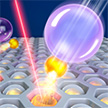 One convenient way to manipulate nanoscale objects with remote controllability is actuation and propulsion by light, which is largely based on optical and photothermal-induced forces. Unfortunately, the output of optical and photothermal-induced forces is small and speed is slow. This changes with a novel and intriguing nanoactuation system: plasmonic nanodynamite. This system can be optically triggered to eject gold nanobullets with an initial speed of up to 300 m/s.
One convenient way to manipulate nanoscale objects with remote controllability is actuation and propulsion by light, which is largely based on optical and photothermal-induced forces. Unfortunately, the output of optical and photothermal-induced forces is small and speed is slow. This changes with a novel and intriguing nanoactuation system: plasmonic nanodynamite. This system can be optically triggered to eject gold nanobullets with an initial speed of up to 300 m/s.
Aug 8th, 2022
 The controlled rotation of micro- and nanoscale objects plays a crucial role in sensing, imaging, biomedicine, and manufacturing. What makes light-driven micro- and nanorotors so promising for many applications is their non-contact, fuel-free operation. It has remained challenging for simple and low-power optics to achieve light-driven rotation of a wide range of objects, including optically symmetric synthetic particles and biological cells. A novel platform elegantly addresses this issue by achieving the rotation of various particles and live cells using an arbitrary low-power laser beam.
The controlled rotation of micro- and nanoscale objects plays a crucial role in sensing, imaging, biomedicine, and manufacturing. What makes light-driven micro- and nanorotors so promising for many applications is their non-contact, fuel-free operation. It has remained challenging for simple and low-power optics to achieve light-driven rotation of a wide range of objects, including optically symmetric synthetic particles and biological cells. A novel platform elegantly addresses this issue by achieving the rotation of various particles and live cells using an arbitrary low-power laser beam.
Jul 4th, 2022
 Researchers develop miniature motorized sensors employing genetically engineered viruses to selectively detect E. coli bacteria with speed and accuracy down to medically meaningful concentrations.
Researchers develop miniature motorized sensors employing genetically engineered viruses to selectively detect E. coli bacteria with speed and accuracy down to medically meaningful concentrations.
 Subscribe to our Nanotechnology Spotlight feed
Subscribe to our Nanotechnology Spotlight feed





